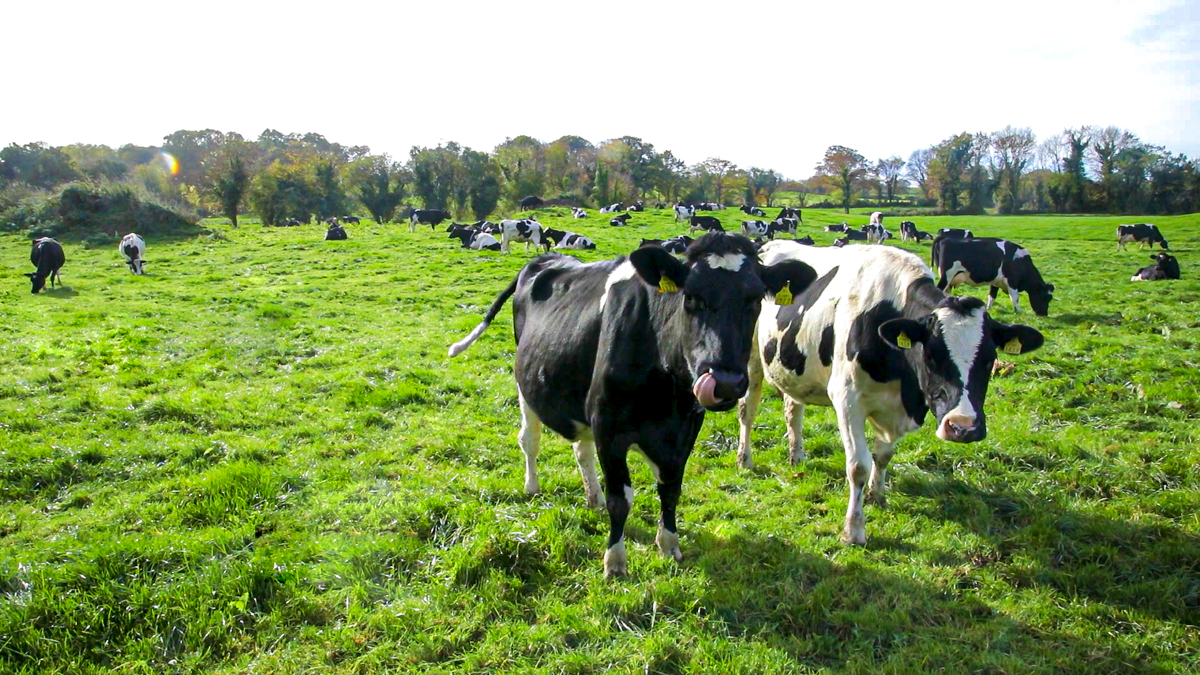A further reduction or loss of the nitrates derogation would result in the loss of our competitive advantage, according to Denis Drennan, the new president of the Irish Creamery Milk Supplier Association (ICMSA).
Agriland spoke with the new ICMSA president about the challenges facing the sector, how he will change public perception, and the outlook for 2024.
Commenting on what he believes to be the biggest challenge facing the Irish dairy sector, Drennan said: “You’d want to be looking over both shoulders, milk price is always a huge issue.
“It is not sustainable. The cost of production, diesel, feed, fertiliser, fuel, contracting charges, everything is gone completely out of control since the invasion of Ukraine.
“The price needs to increase to reflect the cost of production,” he said.
Drennan noted that Ireland’s unique advantage is our ability to grow grass for 12 months of the year, and that if the derogation maximum stocking rate is cut further, we will not have enough stock to eat this grass.
He pointed out the Teagasc modelling, which has shown that reducing the stocking rates on land only has very little effect on water quality.
He said: “We are going to end up in a situation where we will have more grass than cows to eat it, if you look at the research from Moorepark and Johnstown castle, David Wall told me recently that they are growing 14t of grass in multispecies swards on 60kg of nitrogen – that is unheard of anywhere in the world.
“We have that advantage, we need to maintain that competitive advantage by doing that, but it is going to take time for people to incorporate multispecies swards and clover – it can’t be done overnight.
“I would be afraid that as we get better and better at growing grass, in a more sustainable way with less reliance on nitrogen, we will end up that we won’t have the cows to eat it.
“That’s a huge problem, we would lose our competitive advantage if that happens,” Drennan said.
Climate
Climate change and achieving emissions challenges are significant issues facing the agricultural sector.
Drennan said that there is a huge need for a mature discussion on climate change, and its effect on the environment.
“It is very easy for any television or radio station to focus on farming, ok, we are responsible for 36-37% of emissions – but a lot of those emissions are part of a natural cycle.”
He added: “For 10 months of the year, cows are outside eating grass, which is sequestering carbon dioxide from the atmosphere, she takes that in the form of grass and breaths out carbon dioxide, as we do when we breath, and she releases a small amount of methane into the atmosphere every year, of about 0.9t.
“After about ten years, it turns back into carbon dioxide and goes back into the grass cycle again, the grass takes it back in, that is a cycle.
“Where as if you get into your car, or you turn on your heating at night – you are burning a fossil fuel that has been dug out of the ground after millions of years – releasing extra carbon dioxide and other toxic chemicals into the atmosphere.”
Drennan said we also need to look at which emissions are actually necessary: “Here on the farm, where you are producing milk, cheese, butter, beef or lamb from that grass, that’s recycling the carbon.
“That is very different, that is a necessary to produce food, we have over eight billion people in the world, we need to produce food.
“I think those emissions need to be treated differently, to the emission we flight off on our holidays to Spain or Portugal, or where ever it is, that our a choice that we have. But the emissions from food are totally different, I think,” Drennan said.
Drennan also spoke on the importance of improving genetic potential of beef coming from that dairy herd, with 60% of the national kill now originating from the dairy herd.
He noted that the meat from a dairy beef animal is far more carbon efficient than from other sectors, and incentivisation is need to encourage early slaughter and breeding an animal that is fit for purpose.
Outlook
Commenting on the outlook for the dairy sector in 2024, Drennan noted that nitrates and cost of production are challenges for the sector.
“We are probably producing milk for the last six months at below the cost of production.”
He said that the milk price is going to have to start with a four, with the signs from the markets showing that it heading in that direction.
“The Dutch dairy quotas are heading for 43/44c/L for butter, slimmed milk powder and whole milk powder.
“Global dairy trade is on an upward trajectory, supply has collapsed very where because of both price and weather.
“It is positive from a milk price point of view, things are looking good for the new year,” he added.
Drennan also said that the changes to nitrate regulations pose a significant challenge for the sector, but that he was hopeful that there would be some flexibility for farmers affected by the changes.
